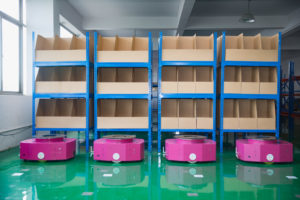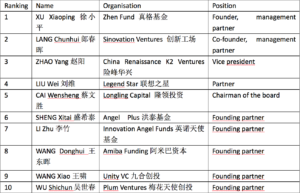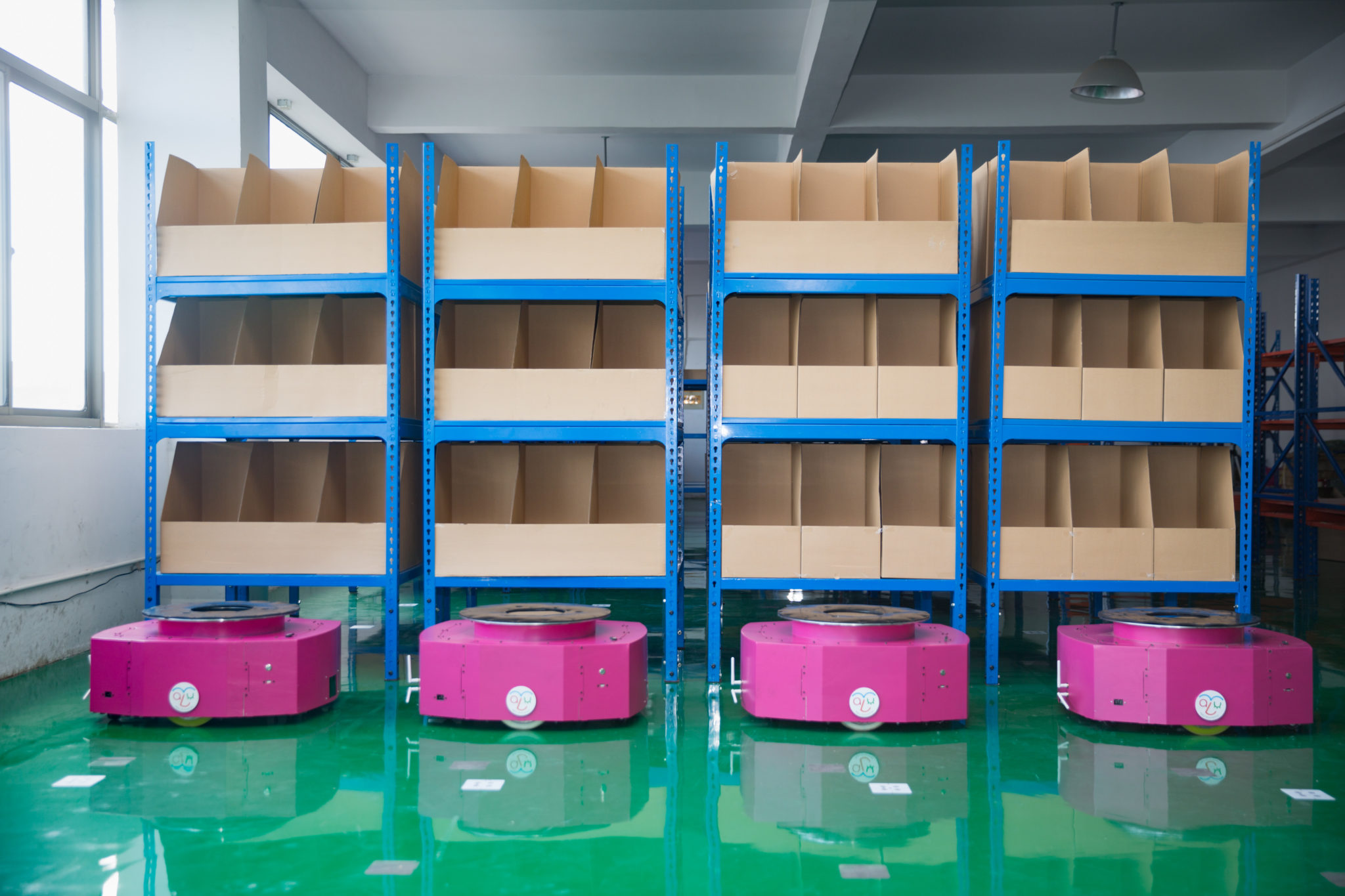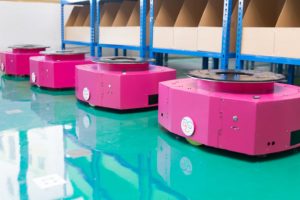[Interview] “E-commerce in China is booming but logistical capacity is under-developed”
Daxue Consulting (China market entry) met Cao Shuyang曹抒阳, co-founder of Malu Innovation (in Chinese 马路创新). Created in 2015, Malu Innovation is a customizable smart

warehousing solution supplier that provides robot system for the sorting area with algorithm-centralized technologies. Products are entirely developed and produced by Malu’s team, composed of about 15 young talents from different backgrounds (technology, operation, investment).
Can you tell us about your educational background and your career?
I have studied four years at Fudan University (in Chinese复旦大学) in Shanghai and got my Bachelor in 2009. I went to Paris, where I graduated from ESSEC Business School with the Advanced Master in Financial Techniques in 2010. Then, I joined the strategic team of the French group Imerys. My work mainly consisted of analyzing draft strategies, greenfield investment projects (for company formation), and merger and acquisition (M&A) projects. I stayed seven months in Imerys offices in Paris and moved back to Shanghai where I worked five months at Imerys Shanghai. After this experience, I decided to turn to private equity in 2011. I worked at Cathay Capital, an investment fund in Europe, the United States, and in China that manages 1.3 billion euros. As a professional investor, I focused on the logistics industry first, then in consumer goods and business services.
From where does the idea of starting your company come?
With my investment experience, I held all the cards to set up my own business. I think I am moving in the right way, involving in the promising market of warehousing solution. The potential market volume for Malu is RMB 24 billion and expected to triple by 2020. This industry has high potential thanks to the e-commerce boom and high technical barriers to entry.
Of course, this project would not have been launched if I had not met the right person. Last year, I saw my good friend from high school Liu Zhe刘哲 again. He went to France too: after preparatory classes, he entered the Ecole Polytechnique and graduated with a Master in Computer Science. Then he studied at the Imperial College London and obtained a second Master in Computer Science, headed back to Paris to do his Ph.D. in Machine Vision in the laboratory Imagine (formerly CERTIS) at the Ecole des Ponts ParisTech, and eventually finished school in 2014. When we met again in 2015, we immediately thought about creating something together. I told him about my idea of warehouse robotics that he approved. He did not see any obstacle to realizing the project. That is how we have partnered and went to register our company on September 2015, a year and a half ago now. Since then, we have developed our product and sold it to our first customer last month.
“Currently, 99% of the order picking process is performed manually in e-commerce warehouses.”
What does Malu Innovation offer?
Xiaoma, the automated guided vehicle (AGV) of the solution that we offer, was developed and produced in-house. Our last prototype, Xiaoma 3.0, was released in September 2016. Our product is dedicated to e-commerce warehouses with multiple working areas and aims to be used in the sorting area.
Currently, 99% of the order picking process is performed manually in e-commerce warehouses. When an order is placed and transmitted to the storehouse, sorting workers go and get the products one by one on the shelves to drop them off in the packaging area. Using Xiaoma, workers just have to stay next to the shelves and get the ordered products according to the instructions on the screen beside them. Xiaoma would reduce their workload since they usually have to walk 30 to 50 kilometers daily in the sorting area.
Malu system can replace 70 to 80% of sorting workers. For 100 currently employed, warehouses equipped with Malu system would only need 20 workers; this would reduce the workforce by four-fifths and simplify the management of warehouses. Given that labor cost in China is rising by 10 to 15% every year, these savings are crucial. Plus, it is increasingly difficult to recruit sorting workers, because it is seen as a boring and hard job.
It took us one year to develop Malu system, and the payback period is estimated at one year and a half, which is a pretty good deal. Our first client is a company in Shanghai that manages its shop on Taobao 淘宝 (the biggest e-commerce platform in China) and its warehouse, and they ordered us a hundred robots.
“Malu system can replace 70 to 80% of sorting workers.”

How is Malu Innovation positioned in the market?
At present, the only mature B2C robot sorting system is KIVA system, which Amazon acquired in 2012 to use it internally.
To develop Xiaoma, we learned from KIVA robots, but we created our software and hardware in-house and applied for a patent in China to protect them. Our technical capacity and R&D are the key to success.
Which business challenges have you faced since you started Malu Innovation?
We have faced attempts of plagiarism, but effective means exist to protect our project. Its core is the software that was written at 80% by our technical partners. Regarding assembly of our robots, we produce them in our workshop and choose not to outsource to reduce costs (it is technical and very complex) and protect ourselves from plagiarism.
If we receive a large order, we can either open our factory or outsource production. If we assemble internally in our plant, products will include our savoir-faire, but outsourcing is not necessarily synonymous with bad quality. For example, we know reliable factories in Shenzhen and Suzhou thanks to our network of contacts.
For now, our priority is to protect our intellectual property, so we produce ourselves.
What do we need to know about financing and fundraising in China?
An increasing number of funding structures now exist in China: seed funding (usually less than one million RMB), pre-Series A funding and Series A funding. As far as business angels are concerned, they generally invest in the Research and Development (R&D) stage.
TOP 10 Angel Investors of the Year 2015 – QingKe 清科 ranking

To raise funds in China, you can present you project during contests and road shows, often organized in Innovation Zones by local governments, for example at Tsinghua University Science Park (TusPark, in Chinese 清华科技园) in Beijing. Funding structures are different than the French ones, where investors are related to communities and not to zones like the one of Beijing.
How to pitch successfully?
To pitch for your project, a presentation of 10 to 15 slides is the standard. The co-founders’ profiles are critical; it is better not to be alone and have three or four co-founders with different but complementary backgrounds. Your presentation should include the market you target, its potential, its barriers to entry, and your market positioning. Your objective is to prove to potential investors that your start-up company and your business model will be successful. The primary concern for investors is your business’s profitability. Keep in mind that the Chinese market is extremely dynamic and highly competitive and that in six months, about ten competitors will be doing what you do.
Can we expect Chinese banks and government to provide support?
Bank financing does not exist in China as it does in France; Chinese banks avoid taking this type of risks. However, some banks like the Merchant Bank have support policy for start-up companies, but there are very few of them.
Regarding the Chinese government, there is no tax exemption arrangement, but you can negotiate with the local government where your company is registered. For example, you can obtain a refund of the half of one million RMB previously paid tax. Many projects are launched to support entrepreneurs, especially Chinese graduates, who may receive between 300,000 and 2 million RMB depending on their project and the city where they are. The government supports start-up companies in the industries considered as strategic, like robotics and healthcare.
“I’d advise joining a Chinese company for two or three years to build a network of contacts on-site.”
What advice would you give to entrepreneurs to start a company in China?
To raise funds for your start-up company, be sure to know well how to work the system and define clearly your project before presenting it to potential investors.
Having a network of contacts is a burning issue in China, to ensure collaborating with serious partners and to build your customer base. Chinese people want to take no risk, and for them, the network is synonymous with reliability and trust. Luckily I have a good network and my associate too, but if not, I suggest to ask your investors.
The Chinese are good at copying concepts, but they begin to innovate. You will need a solid technical force that can hardly be reproduced, especially since the Chinese market is fast-evolving and competition is intense, namely in robotics, healthcare, and e-commerce.
For foreign entrepreneurs, enter the Chinese market requires some preparation. You need to understand well the market, build your network of contacts to interact with professionals in your field, and closely follow Chinese news. I would advise joining a Chinese company for two or three years to build a network on-site, understand the mentality and the way to do business in China. I also recommend having local associates whom you can trust. Eventually, go beyond the Chinese market: use cross-border platforms to link your home country with China, this is will be a real strength of your company. For example in the tourism industry, an increasing number of Chinese people travel abroad and are looking for local services. Cross-border e-commerce is also a very promising market since the Chinese like Japanese, Korean, and European products. Many companies are working on connecting foreign brands with Chinese consumers.
What comes next for Malu Innovation?
We have launched Malu Innovation in a high-potential market since e-commerce in China is booming. The market is already huge but will keep growing, while logistical capacity is under-developed and online commerce will require more warehouses. Another major point is to make the work in warehouse more efficient: there are not enough high-end storage facilities, all the orders are prepared manually for now.
An increasing number of e-commerce companies are investing, and we think it is only the beginning of a greater tendency since everybody now pays attention to automated warehousing solutions. Our strategy is to specialize in robotics, to offer robot systems to express delivery companies like DHL or provide logistics solutions to manufacturing and packaging factories. There is a huge demand, far bigger than the one to which KIVA responded. Our second project will start next year in a research phase.
China Paradigm podcast interview with Shuyang Cao
Learn about Malu Innovation’s story, a company that is revolutionizing warehousing from China to the World. Shuyang Cao reveals how he raised money, built the products, partners with his 3 co-founders and convinced a top investor like JD.com to invest in their business.
Stay Up-to-Date: Follow us on Facebook:






